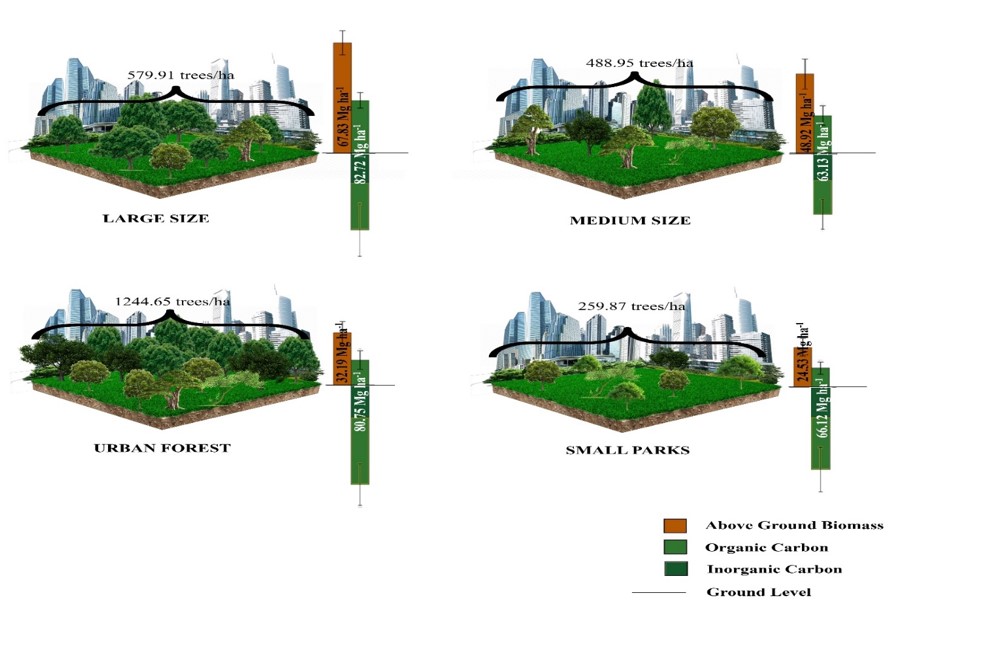
Urban parks and forests are essential elements of urban ecosystems, providing vital ecosystem services including climate regulation, air purification, and carbon sequestration. Green spaces significantly mitigate the ecological impacts of urban development by functioning as terrestrial carbon sinks. This research, carried out in Multan, Pakistan, evaluated carbon densities across 10 parks classified as small, medium, large, and urban forests. Aboveground and soil carbon densities were measured, along with associated variables such as biodiversity and soil bulk density. Large and medium-sized parks demonstrated the highest aboveground carbon densities, measuring 32.56 Mg ha⁻¹ and 23.48 Mg ha⁻¹, respectively. In contrast, urban forests recorded 15.45 Mg ha⁻¹, while small parks had 11.77 Mg ha⁻¹. This disparity is primarily attributed to the presence of dense, well-managed tree plantations. Total carbon densities, encompassing aboveground biomass and soil carbon, varied from 63 Mg ha⁻¹ to 82.72 Mg ha⁻¹. Large parks exhibited the highest density at 82.72 Mg ha⁻¹, followed by urban forests at 80.75 Mg ha⁻¹, small parks at 66.12 Mg ha⁻¹, and medium-sized parks at 63.13 Mg ha⁻¹. The findings underscore the essential function of urban green spaces in carbon sequestration. Enhancing carbon storage in arid environments necessitates prioritizing the plantation of high-biomass tree species and increasing tree density in urban parks to promote sustainable urban ecosystems.
Total file downloads: 14